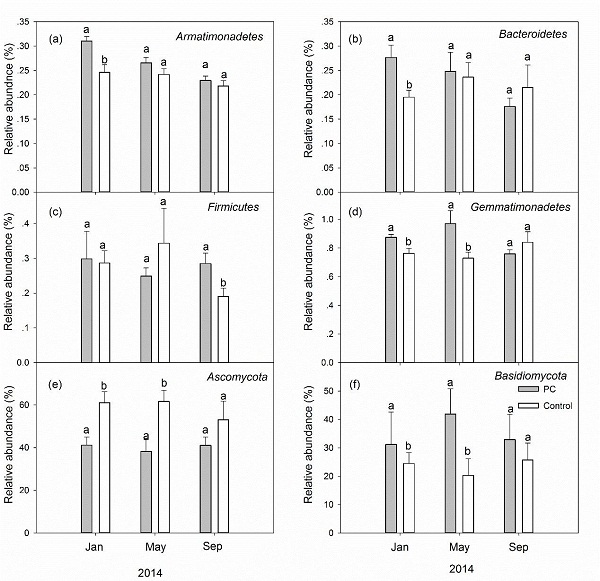Global precipitation patterns, including the amount, intensity, and timing of rainfall, have been changing in almost all regions of the world over the last decades. The subtropical forests in southern China are the largest C sink of the region , and they are projected to experience a decrease in the dry-season rainfall and an increase in the wet-season rainfall in the coming decades. However, it is still unclear about how soil microbial communities will respond to potential future precipitation changes in a warm-humid forest.
With the guidance of Prof. Shuguang Jian and Weijun Shen, Ph.D student Qian Zhao explored the impacts of reducing dry-season rainfall but increasing wet-season rainfall on soil microbial community composition and enzyme activities. A 67% reduction of throughfall during the dry season decreased soil water content by 17–24% (P < 0.05). The seasonal precipitation redistribution had no significant effect on the microbial biomass and enzyme activities, as well as on the community composition measured with phospholipid fatty acids (PLFAs). The dry-season throughfall reduction increased the relative abundance of rare bacterial phyla (Gemmatimonadetes, Armatimonadetes, and Bacteriodetes) that together accounted for only 1.5% of the total bacterial abundance by 15.8%, 40%, and 24% (P < 0.05), respectively. This treatment increased the relative abundance of Basidiomycota by 27.4% while reduced that of Ascomycota by 32.6% (P < 0.05) of fungal community. Our results indicate that changes in precipitation seasonality can affect soil microbial community composition at lower taxon levels.
This research is published in Biology and Fertility of Soil (IF2016=3.683). This research is supported by Natural Science Foundation of China (31130011, 31425005, and 31290222), the Guangdong Science and Technology Program (2016A030303044), and the International Partnership Program for Creative Research Teams of the Chinese Academy of Sciences.
Figure 1. The overview of the experimental sites.
Figure 2. Relative abundance of bacterial and fungal phyla in response to the precipitation changes. The letters represent the significant difference of the precipitation change (P < 0.05)

